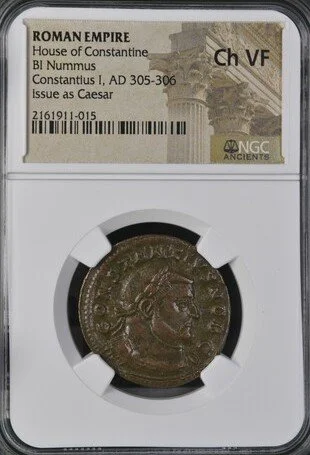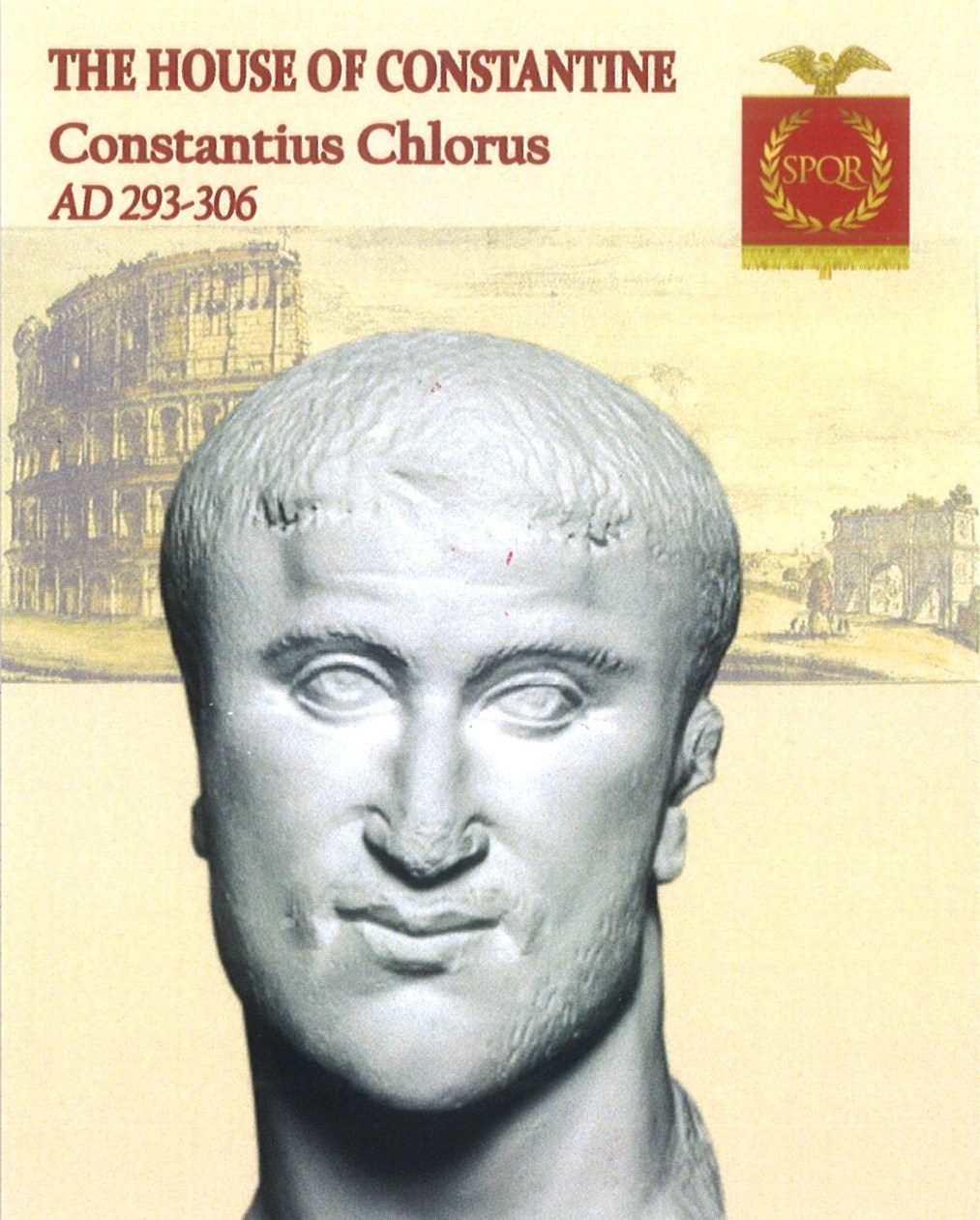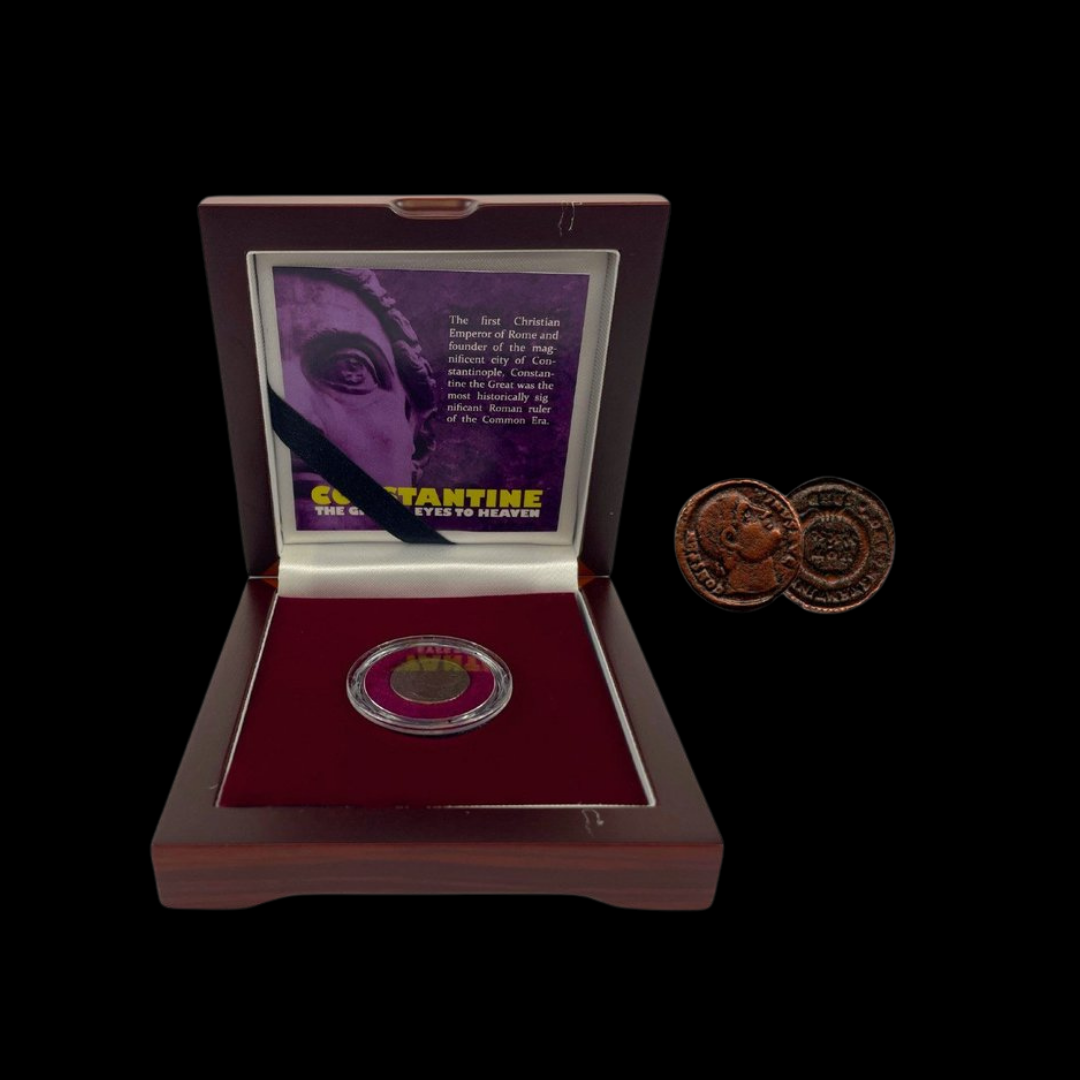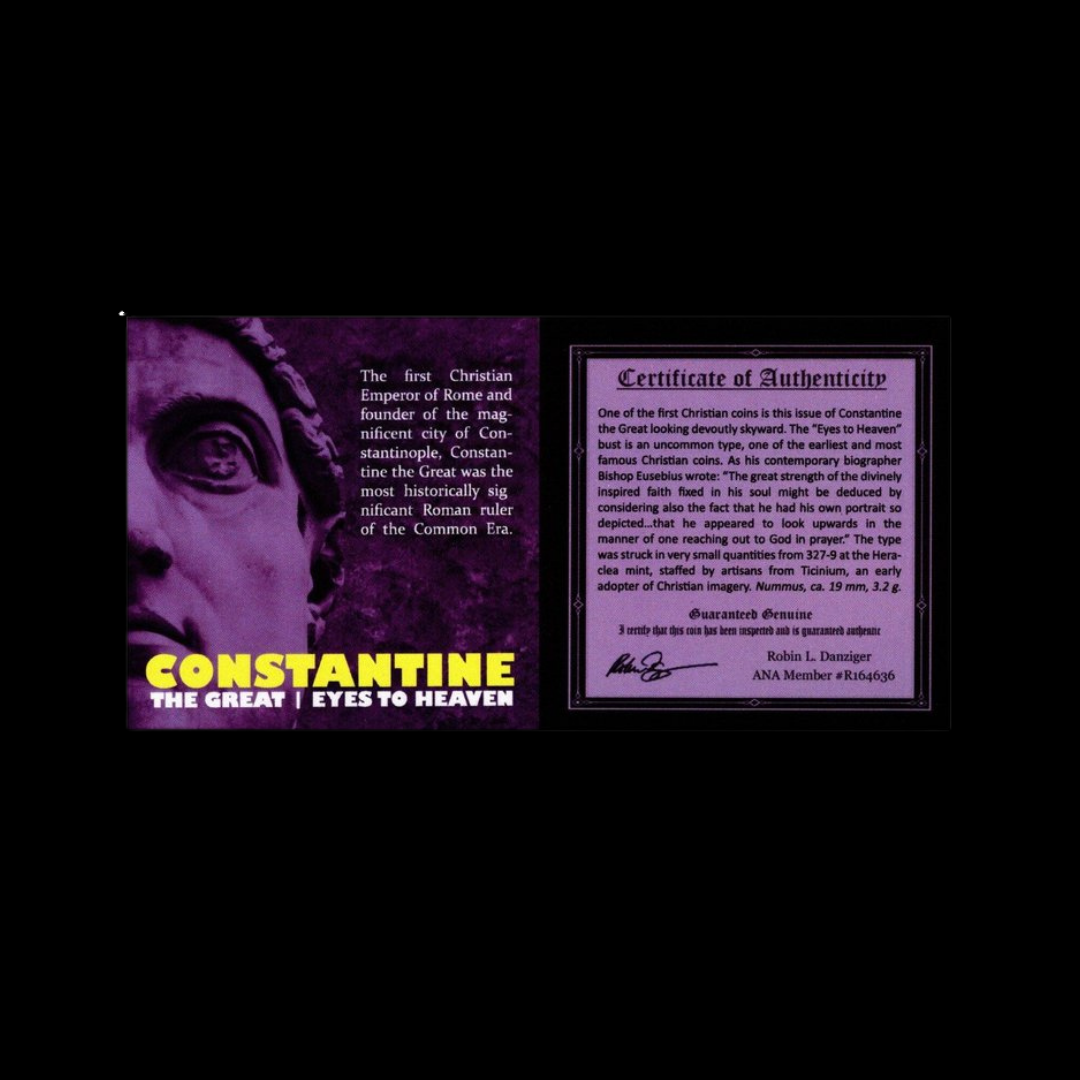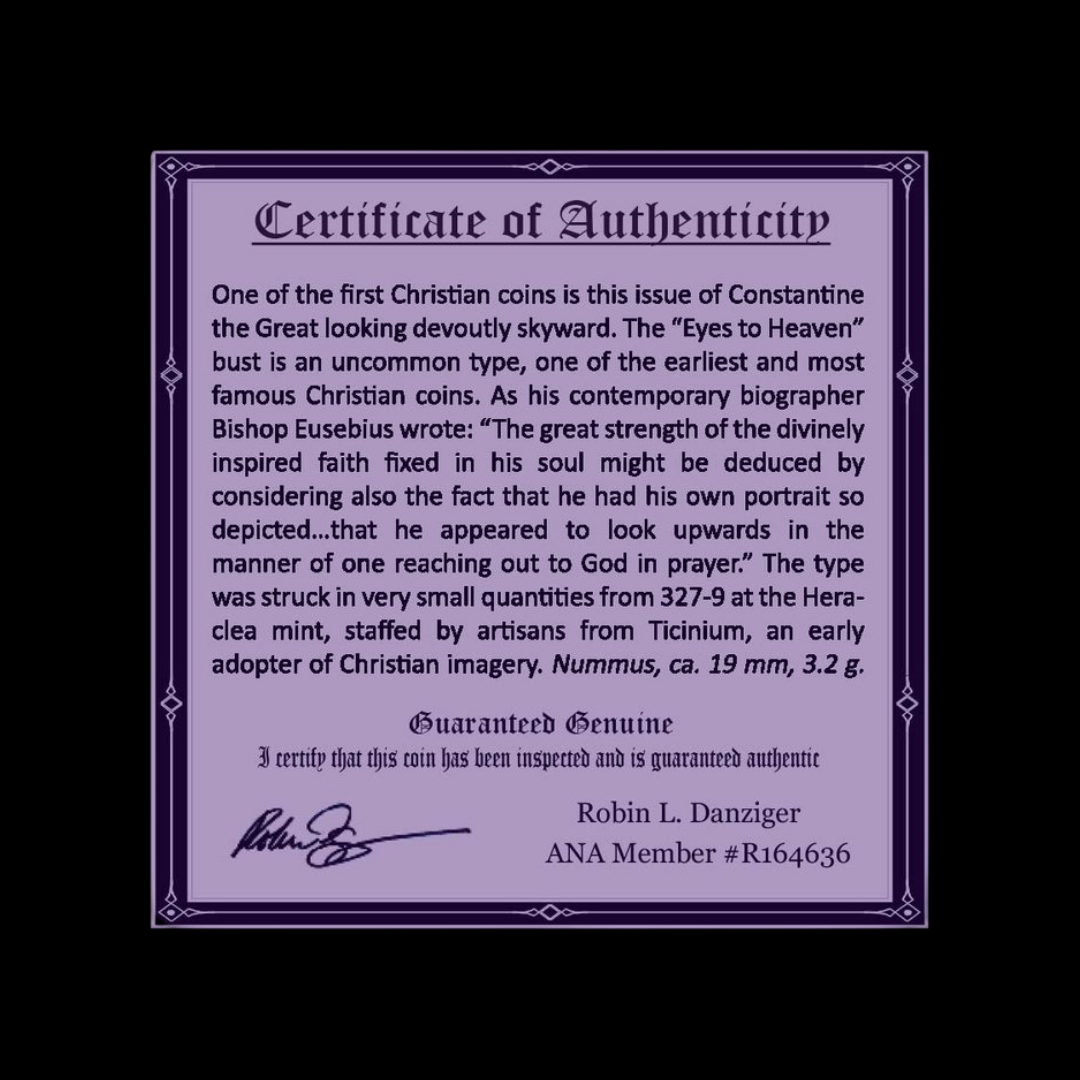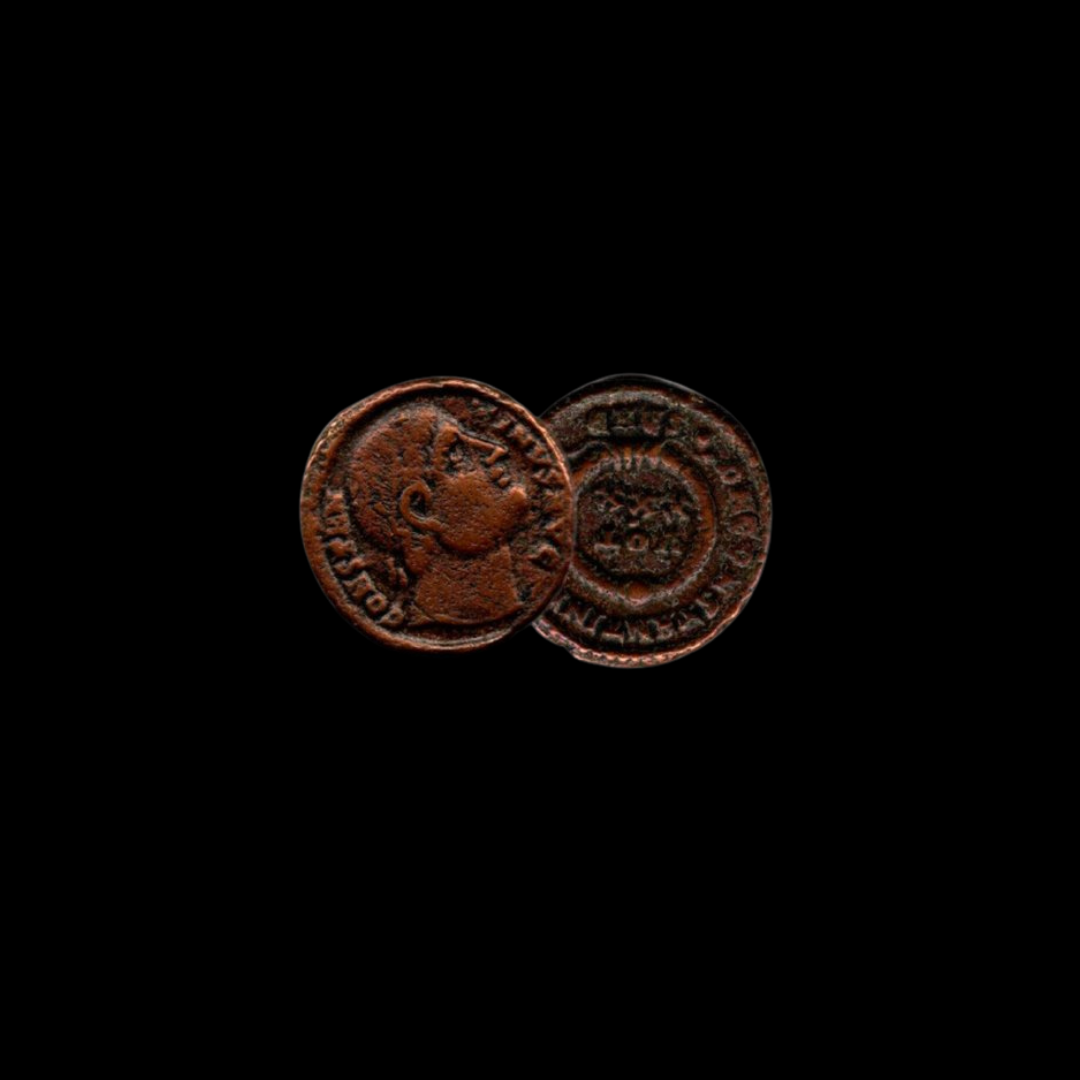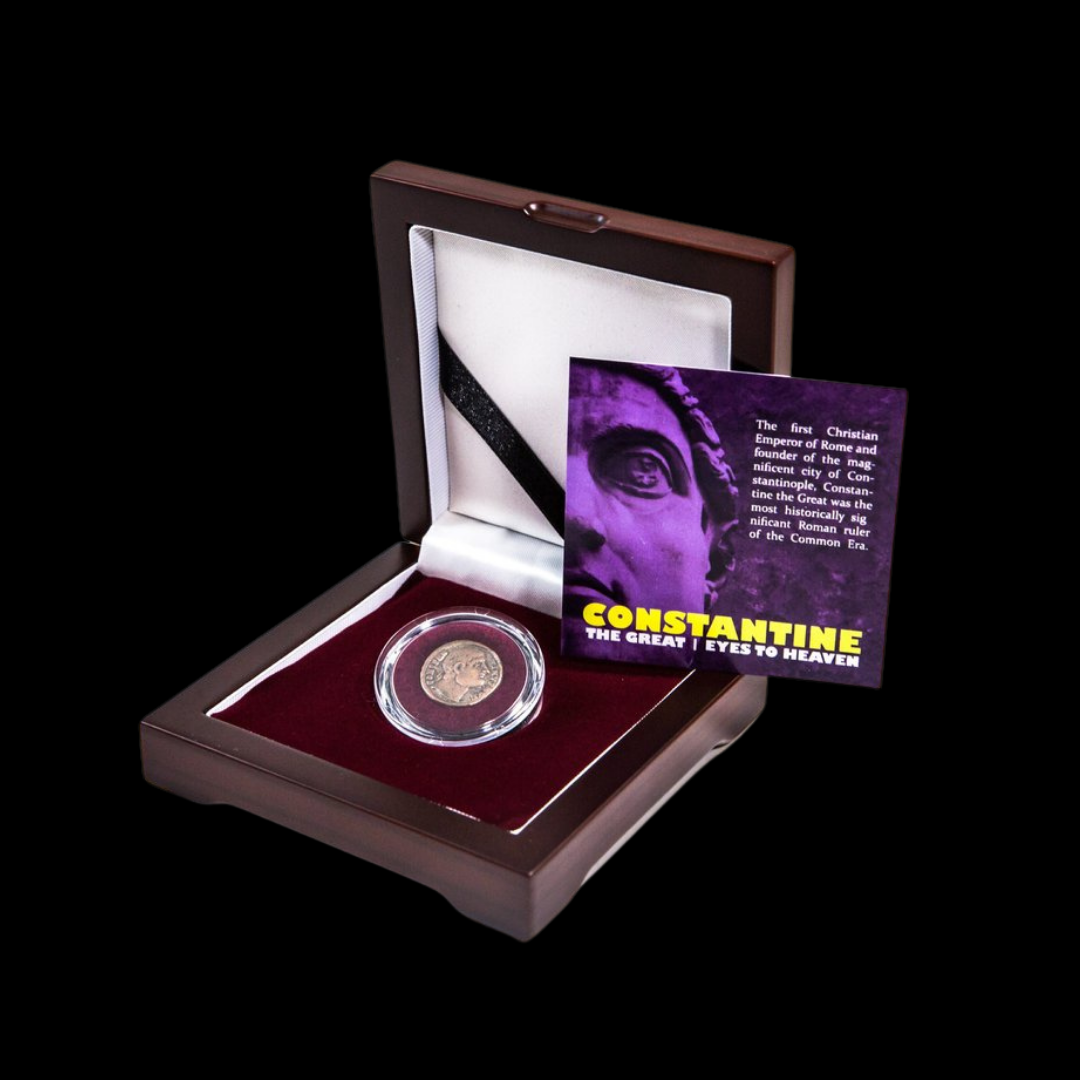 Image 1 of 4
Image 1 of 4

 Image 2 of 4
Image 2 of 4

 Image 3 of 4
Image 3 of 4

 Image 4 of 4
Image 4 of 4





Roman Coin of Diocletian (about 1720 years ago) (AE1)
The coins shown are representative examples of the grade and type, but not the actual specimens for sale. For details on NGC’s grading standards and definitions, please refer to our NGC Grading page.
Roman Empire – Diocletian (AD 284–305) – Bronze Coin, NGC Certified
This historically important bronze coin was issued under Emperor Diocletian, the formidable ruler who ended the “Crisis of the Third Century” and reshaped the Roman state.
Obverse: Laureate or radiate portrait of Diocletian, depicted with imperial dignity.
Reverse: Roman imperial symbols and inscriptions, emphasizing stability and authority.
Technical Details: Bronze; authenticated and certified by NGC.
Historical Significance:
Diocletian, ascending the throne in AD 284, brought order after nearly fifty years of military anarchy and economic collapse. His establishment of the Tetrarchy—rule by four emperors—created a new model of imperial governance that shaped Roman politics for generations. Known for his sweeping administrative reforms, rigid authority, and the last great persecution of Christians, Diocletian left an enduring legacy. His monumental Palace at Split (modern Croatia) became a model of late Roman architecture, influencing European design centuries later.
This coin is not only a tangible artifact of Rome’s recovery from chaos, but also a lasting reminder of the emperor whose reforms defined the later Roman Empire.
The coins shown are representative examples of the grade and type, but not the actual specimens for sale. For details on NGC’s grading standards and definitions, please refer to our NGC Grading page.
Roman Empire – Diocletian (AD 284–305) – Bronze Coin, NGC Certified
This historically important bronze coin was issued under Emperor Diocletian, the formidable ruler who ended the “Crisis of the Third Century” and reshaped the Roman state.
Obverse: Laureate or radiate portrait of Diocletian, depicted with imperial dignity.
Reverse: Roman imperial symbols and inscriptions, emphasizing stability and authority.
Technical Details: Bronze; authenticated and certified by NGC.
Historical Significance:
Diocletian, ascending the throne in AD 284, brought order after nearly fifty years of military anarchy and economic collapse. His establishment of the Tetrarchy—rule by four emperors—created a new model of imperial governance that shaped Roman politics for generations. Known for his sweeping administrative reforms, rigid authority, and the last great persecution of Christians, Diocletian left an enduring legacy. His monumental Palace at Split (modern Croatia) became a model of late Roman architecture, influencing European design centuries later.
This coin is not only a tangible artifact of Rome’s recovery from chaos, but also a lasting reminder of the emperor whose reforms defined the later Roman Empire.



















